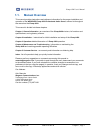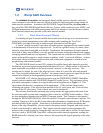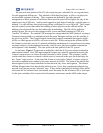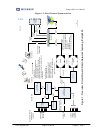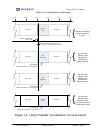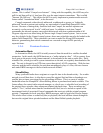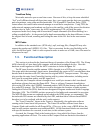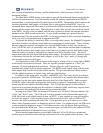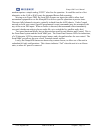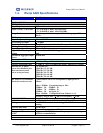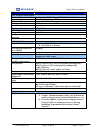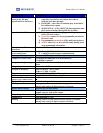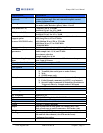
iPump 6420 User’s Manual
www.wegener.com 800070-01 Rev B Chapter 1, Page 10
new versions of application software, and the maintenance of the basic non-volatile unit
parametric settings.
The Hard-drive (HDD) storage is provided to store all the media and objects needed for the
full Store/Forward mission. From the satellite, media file content, transmitted in the MPE/IP
encapsulation, is extracted and the file then stored to the HDD. The database which captures the
location, playability, and lengths, of all audio files is also resident on that HDD. Later, on
command, those same audio files must be read from the HDD and passed to audio decoders for
mixing into the output audio track. When playlists of audio files are built, the results are stored
to the HDD. As new events are added, and old ones executed or deleted, the internal scheduler
database on the HDD is read and written. As new OAR recordings are captured, the new
compressed mp3 files are stored to the HDD. As the unit performs its basic functions, depending
on its Log Level, various status data is logged to the HDD.
To provide the ability to seamlessly splice or overlap audio sources, the iPump6420 supports
up to three instances of software-based audio decompression per audio Output. These software
decoder stages may actually decompress live classical MPEG audio, or they may operate on
wave (16b PCM), mp2, or (optionally) mp3 audio files. Their outputs feed an audio re-sampling
stage, which translates their sample rates to the final user-set sample rate for that audio Output.
Then the audios are muted or attenuated, as required, and fed to an audio mixer. The mixer
output then feeds the final digital and analog audio outputs. Note that the entire structure shown
is duplicated for both the two main audio outputs, as well as the “Aux” audio #3, though only
one example is shown in the Figure.
As companions to each of the two main audio outputs, a bank of 16 cue relays and an RBDS
serial output is associated with each. These are logically grouped together as a “Port”, for
purposes of control and advanced operations. The cue relays are used to provide the
synchronizing signals to local station equipment. The RBDS serial output, along with the main
audio output, may feed the local radio station exciter. This provides the local station listeners
with the added experience of station, song, and artist identification.
In addition to the main audio, cue relays, and RBDS, each “Port” may also be provided an
associated (optional) AM/FM tuner. This tuner is connected to an external radio antenna and is
used to pick up the local radio station driven by that Port of the iPump 6420. Under network
COMPEL control, the audio feed from the local station is captured, compressed to mp3 file
format, and then recorded to the HDD storage. This “Off Air Recording” (OAR) feature is
expected to be executed during spot file insertions, so that the uplink control may request return
of the recorded file (method to be discussed) for commercial audits.
Moving on in Figure TBD, the iPump 6420 features two 100 base-T Ethernet adaptors, the
“LAN” and “WAN” ports. The LAN port is used to transmit various Return Path reports (or
OAR files) back to the uplink control system via HTTP. It also supports its own web interface,
for local user control. It also provides various other network services, such as SMB or FTP
access to the folder containing all audio files. It also provides access to a telnet server, which
allows either Terminal control, or diagnostic access to Linux. For advanced users, an SSH server
is also provided for diagnostic access. Of all these services, only the Return Path capability is
also provided in the WAN port. This is a more secure port, as it only allows the outbound HTTP
connection and blocks all inbound services, even Ping.
Where internet connections are not available from the LAN or WAN ports, an optional
modem may be installed to allow dial-up connections back to the uplink control systems. This



